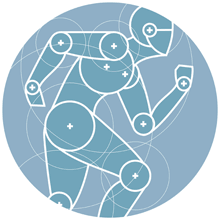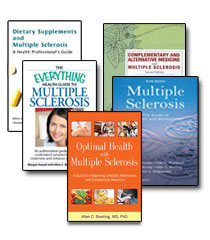T’ai chi is one component of traditional Chinese medicine. This practice, also called t’ai chi ch’uan, was developed centuries ago in China. The slow, rhythmic body movements of t’ai chi may produce effects similar to both meditation and exercise. In recent years, t’ai chi has become increasingly popular within the United States.
Treatment Approach
T’ai chi can be practiced alone or in groups. T’ai chi places emphasis largely on technique, not strength or flexibility, making it accessible even to those who have some physical limitations. The exercise itself consists of specific breathing techniques accompanying slow, rhythmic body movements. A specific series of these movements is called a form. The goal of t’ai chi is to balance yin and yang, two opposing forces found in the body, and to strengthen the chi (or qi), which is believed to be the life force.
Evaluation in MS and Other Conditions
The American College of Traditional Chinese Medicine in San Francisco published a small-scale study in 1999 looking at the effects of an 8-week t’ai chi program on people with MS. There were 19 people in the program, with varying degrees of disability. Some people in the study saw improved walking speed and decreased muscle stiffness, as well as better emotional and social functioning. People in the study felt that the group experience alone was a large part of the therapy. The results of this study are intriguing, but they are far from definitive, due to the small scale of the project, the lack of a placebo-control group, and the reliance on self-assessment.
Work has also been done looking at MS and one component of t’ai chi called mindfulness of movement, which aims to develop a moment-to-moment consciousness of posture, movement, and breathing. This study used assessments provided by both relatives of patients and the patients themselves and compared these assessments before and after the 3 months of treatment. Several symptoms showed improvement following the therapy. Although this study did include a placebo-treated group, it suffered from a high dropout rate and the clinicians were not blinded to the treatment groups.
Studies involving people with other medical conditions have been conducted, but these studies are not without flaws. These studies have suggested t’ai chi may help improve strength, flexibility, balance, and decrease the risk of falls in the elderly. It may also improve lung and heart function, and there is a limited amount of research suggesting that it could improve anxiety, fatigue, and depression.
Although t’ai chi’s mechanism of action is unknown, it appears that it may still be clinically effective. Further MS studies must be done to determine whether t’ai chi is an effective therapy.
Adverse Effects
In general, t’ai chi is considered to be relatively safe. However, it may strain muscles and joints, and it has the potential to increase fatigue. People with MS with heat sensitive symptoms or walking difficulties may need to modify the basic technique. Those with osteoporosis, joint injuries, bone fractures, or low back pain should approach t’ai chi with caution. There is a single reported incident of t’ai chi triggering Lhermitte’s sign (electrical sensations in the arm and back) in a person with MS.
Summary
T’ai chi is a relatively low risk, moderately expensive therapy. Studies of t’ai chi suggest that it might help people with MS decrease muscle stiffness, improve walking, and help with emotional and social functioning. Work done with other medical conditions indicates that t’ai chi may help with depression, anxiety, and fatigue. T’ai chi may be a less strenuous way to gain some of the benefits of rigorous exercise, especially for those whose physical disability limits their ability to do other forms of exercise.
References and Additional Reading
Books
Bowling AC. Complementary and Alternative Medicine and Multiple Sclerosis. New York: Demos Medical Publishing, 2007, pp. 201-203.
Cassileth BR. The Alternative Medicine Handbook. New York: W.W. Norton, 1998:243-247.
Ernst E, ed. The Desktop Guide to Complementary and Alternative Medicine: An Evidence-Based Approach. Edinburgh: Mosby, 2001, pp. 74–76.
Hain TC, Kotsias J, Pai C. T’ai chi: applications to neurology. In: Weintraub MI, Micozzi MS, eds. Alternative and Complementary Treatments in Neurologic Illness. NewYork: Churchill Livingstone, 2001, pp. 248–254.
Spencer JW, Jacobs JJ. Complementary and Alternative Medicine: An Evidence-Based Approach. St. Louis: Mosby, 2003.
Journal Articles
Chu DA. Tai chi, qi gong, and reiki. Phys Med Rehabil Clin N Amer 2004; 15:773–781.
Husted C, Pham L, Hekking A, et al. Improving quality of life for people with chronic conditions: the example of t’ai chi and multiple sclerosis. Alt Ther 1999;5:70–74.
Mills M, Allen J. Mindfulness of movement as a coping strategy in multiple sclerosis. A pilot study. Gen Hosp Psych 2000;22:425–431.






